“This is where they say Shah Jahan, the man behind the Taj Mahal, was imprisoned BY HIS SON.”
Our India teacher tour guide paused dramatically, and our group gazed around Agra Fort, soaking in that shocking history.
Agra Fort in Uttar Prasdesh, India is really more of a giant walled city than a mere fort, and each corner of it has layers of history dating back as far as 1080 CE. It also has… MONKEYS! Upon entering the fort’s hulking red gates, screeching primates bounded towards us. I clutched my husband’s hand, but my brother boldly strode forward to get a photo.
My thoughts raced to the beach I visited in Vietnam where monkeys attacked tourists, and I hollered at my bro to step back. He took one more snap and then casually walked away while I hyperventilated, ever the protective sister.
It took us hours to walk through Agra Fort, and each section has a different type of architecture, function, and story layers. What is the fort’s earliest known history? From the 11th century until the 1500s, the fort served as the stronghold allowing the Sultan to rule the country with Agra as a second capital.
In 1526, Mughals took over the fort, which was then seized by a series of rulers and groups until famous Akbar retook it for the Mughals. Shah Jahan, Akbar’s grandson, and the man who built the Taj Mahal for his lost love, took over Agra Fort next. He did some serious interior decorating, giving whole sections of the inner buildings his ornate flair.
And, oh my, does Agra Fort ever have flair! In particular, I swooned at the arches looking out upon more arches upon arches. They make for some spectacular photographic angles.
But let us return, now, to the shocking story of the son imprisoning his father. As our guide explained, the ruler named Aurangzeb locked up his father, the great Shah Jahan after deposing him in 1658 CE. But the son did not keep his father in a regular jail cell… Rather, he confined him until the end of his life, the story goes, in this gorgeous room:
Perhaps in an effort to be less harsh, Aurangzeb chose that room as the gilded jail cell because it has a view– if India’s ubiquitous mist isn’t too thick — of the Taj Mahal. In this way, Shah Jahan could live out the rest of his days a prisoner, but a prisoner able to gaze upon the most beautiful building in the world: his tribute to love.
Our tour took an eerie turn after we left that beautiful prison. As our group passed a precipitous ledge at the back of the fort, we heard a commotion. Five men were standing on the ledge, looking down. As we got closer, our guide was able to translate: “They say someone fell all the way down off the edge!”
I shivered as we watched them. “If someone already fell,” murmured another teacher on our tour, “it seems a pretty bad idea to be standing on that same ledge looking down!”
We never found out the details of the fall, but it remained on my mind as we continued the tour. I suppose by its nature, however, a fort is a place of drama and lives lost. We placid tourists are hardly reflective of the 1,000 years of bloody history around Agra Fort.
Another echo of history — changes over history — hit me hard as we walked by the following decoration. Do you see the two symbols, startlingly placed side by side, centuries before the Holocaust gave them new meaning?
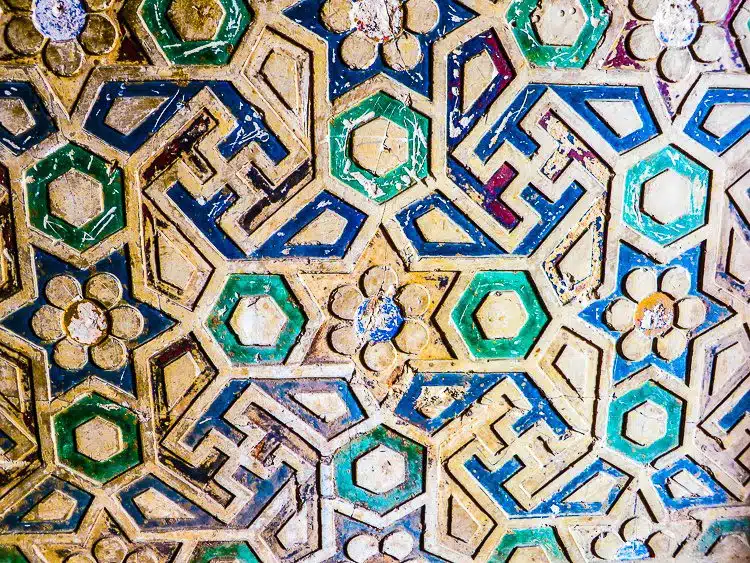
In another juxtaposition, like nearly every historical structure we toured in India, Agra Fort has places of worship for multiple faiths. My favorite, visually, was this mosque, known as the “Gem Mosque” or “Jewel Mosque,” and commissioned by that lover of marble and beauty, Shah Jahan. Little did Shah Jahan know that he would be imprisoned by his own son right next to that mosque.
As we headed towards the exit, I marveled at the arches stretching towards the horizon, reminiscent of a beautiful cloister I saw in Barcelona, Spain. I mused: it’s often the less famous tourist attractions that make a big impression. The Taj Mahal is just a few miles away, so far fewer people stop to think about Agra Fort, but it is a site and sight not to miss.
In closing, do allow me to leave you with monkeys, monkeys, and more monkeys. Can you spot them all? You’re welcome.

The author, Lillie Marshall, is a 6-foot-tall National Board Certified Teacher of English, fitness fan, and mother of two who has been a public school educator since 2003. She launched Around the World “L” Travel and Life Blog in 2009, and over 4.2 million readers have now visited this site. Lillie also runs TeachingTraveling.com and DrawingsOf.com. Subscribe to her monthly newsletter, and follow @WorldLillie on social media!


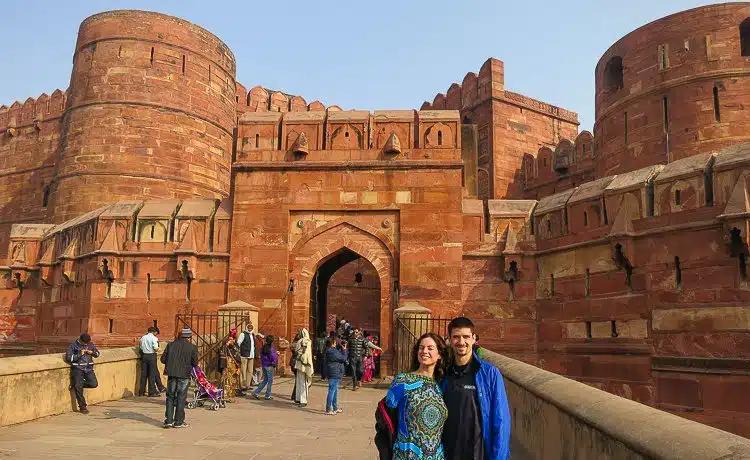
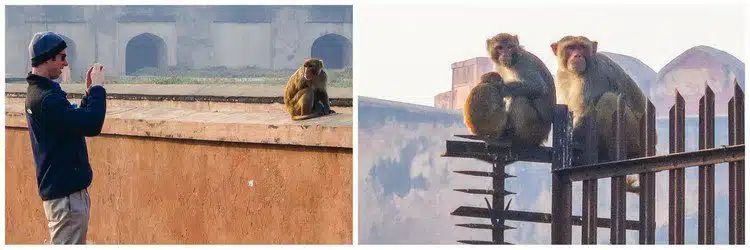
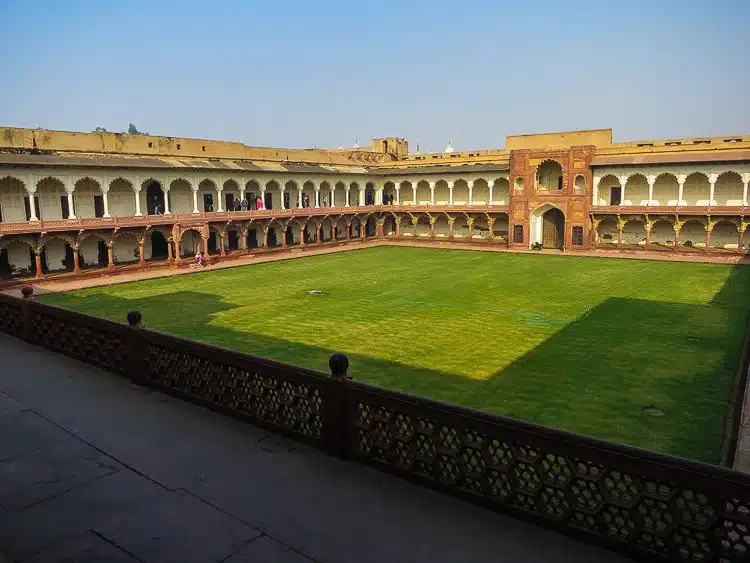
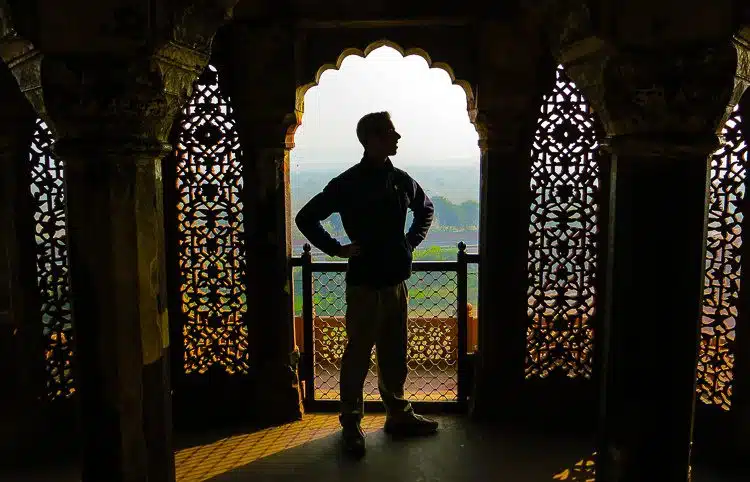

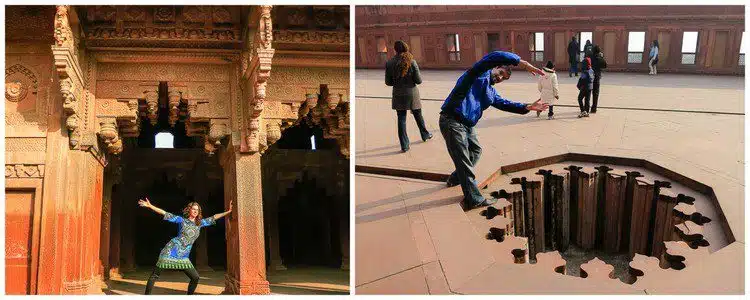
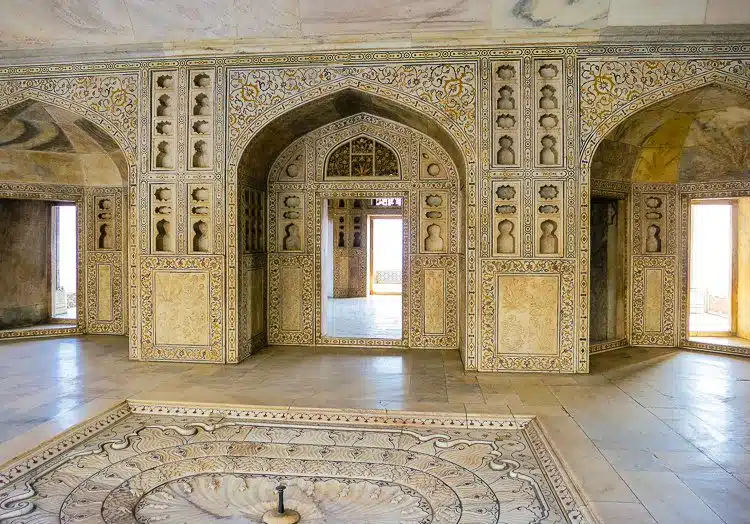
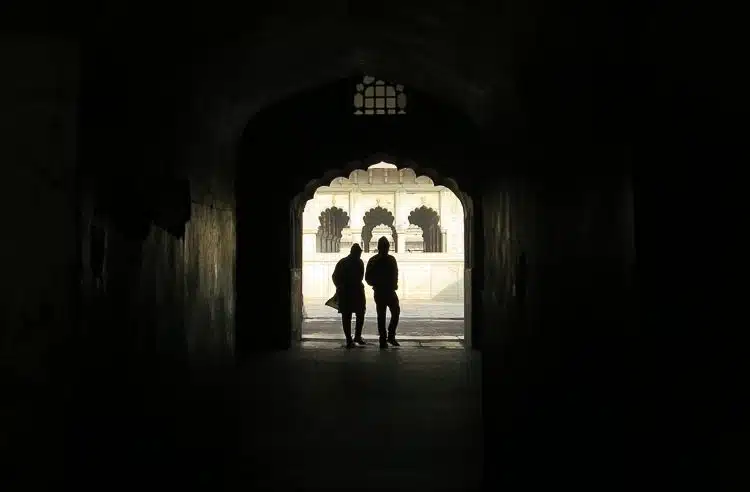
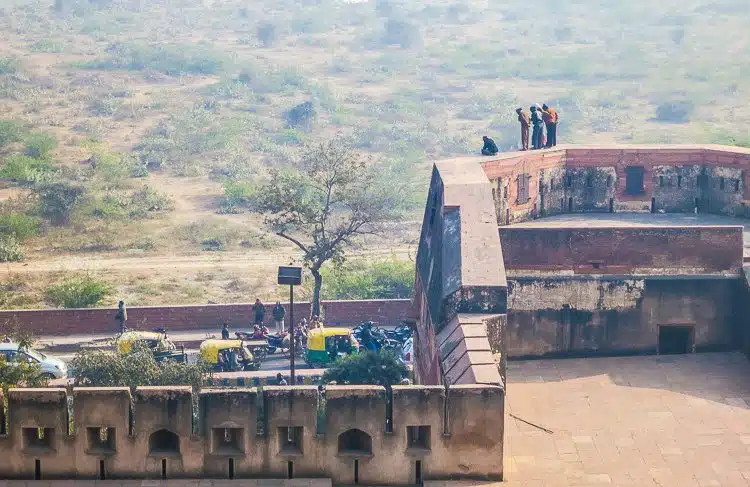
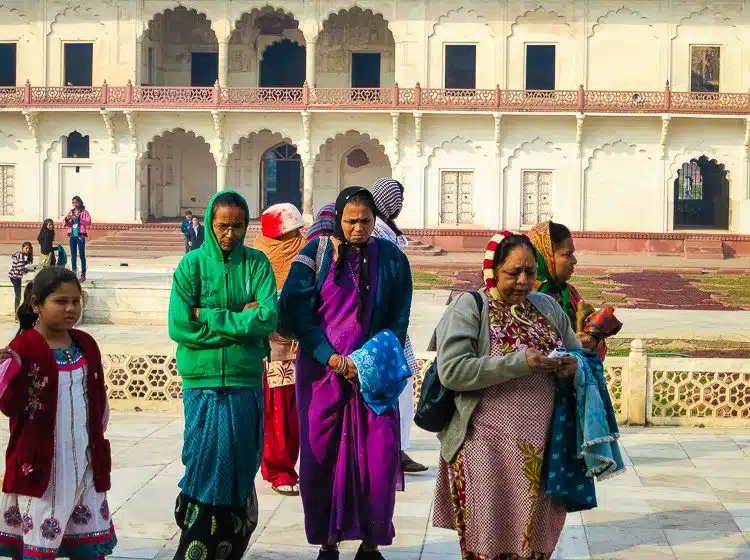
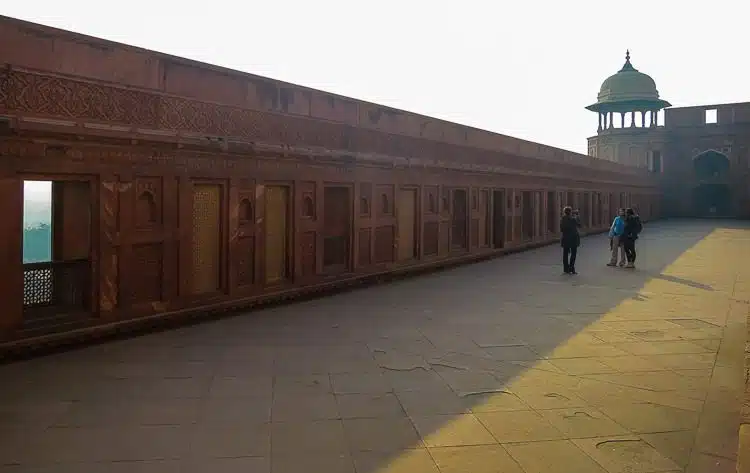
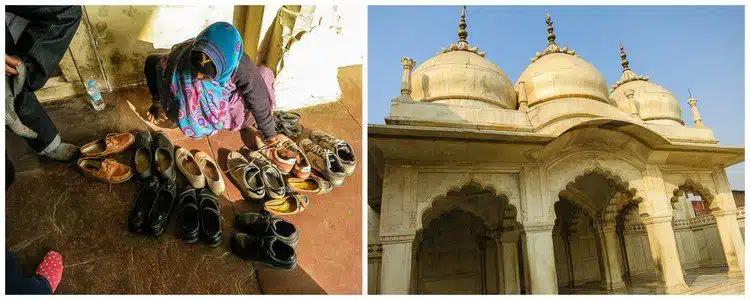
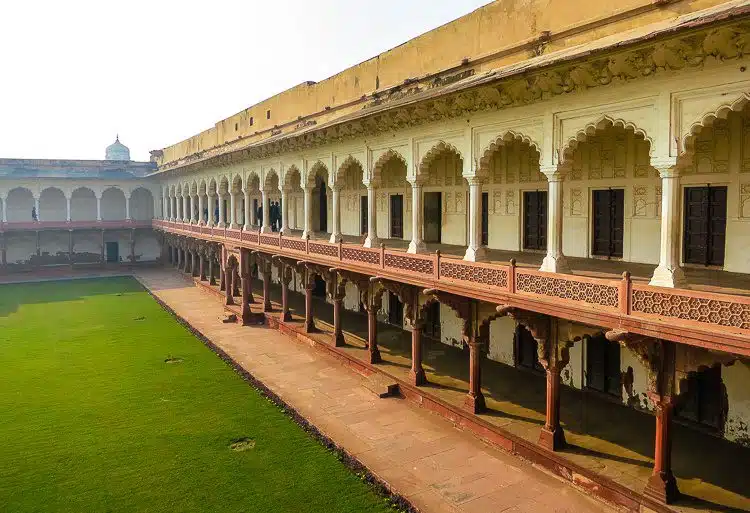
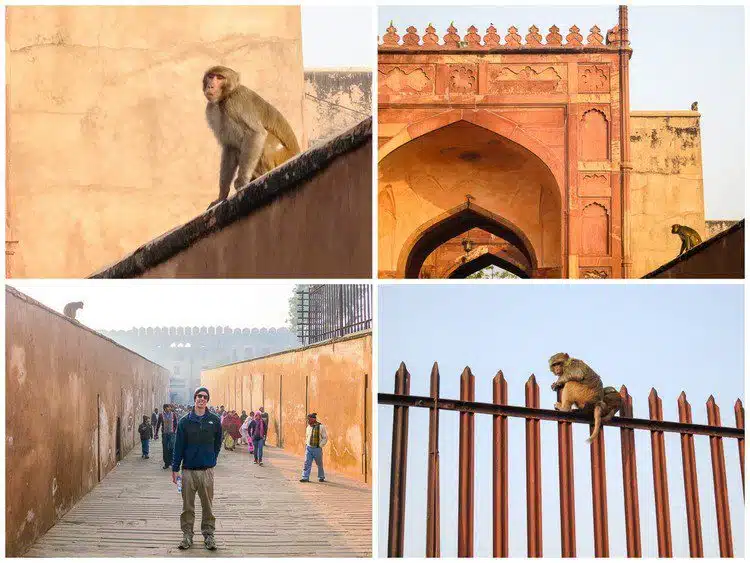
allen jordan
Saturday 30th of June 2018
Don't go close to monkeys ..They will not harm you...If u will go close to them they will snatch ur bags n harm u as it make them feel u r going to harm them...
Lillie
Saturday 30th of June 2018
Thanks for the tip!
Cameron G
Monday 12th of January 2015
I really enjoyed reading this article and looking at the pictures. This article showed me a lot of amazing views and buildings from a long time ago in history. It also showed me monkeys. India looks like it has an amazing culture and it looks like it would be really nice to go there.
Danielle
Friday 9th of January 2015
Ms. Marshall I am interested in this article because it shows a different side of India and what you could do there.
Angelina
Thursday 8th of January 2015
This is extremely cool. I would love to visit sometime and see where all the amazing history happened. And the son imprisoning his father is vice versa of what happened in Harry Potter. Barty Crouch sr. sends his son to Azkaban. Also did the Nazi's get their symbol from here?
Lillie
Saturday 10th of January 2015
What an interesting connection you've drawn! Regarding the history of the Nazi symbol, that's something to look into.
Payton
Thursday 8th of January 2015
It seems as if the Taj Mahal is a place full of danger and mystery. I'm very intrigued! I would be very freighted being near that wall, as well as the monkeys. I was once attacked by turkey, so I'm definitely frightened by wild animals.